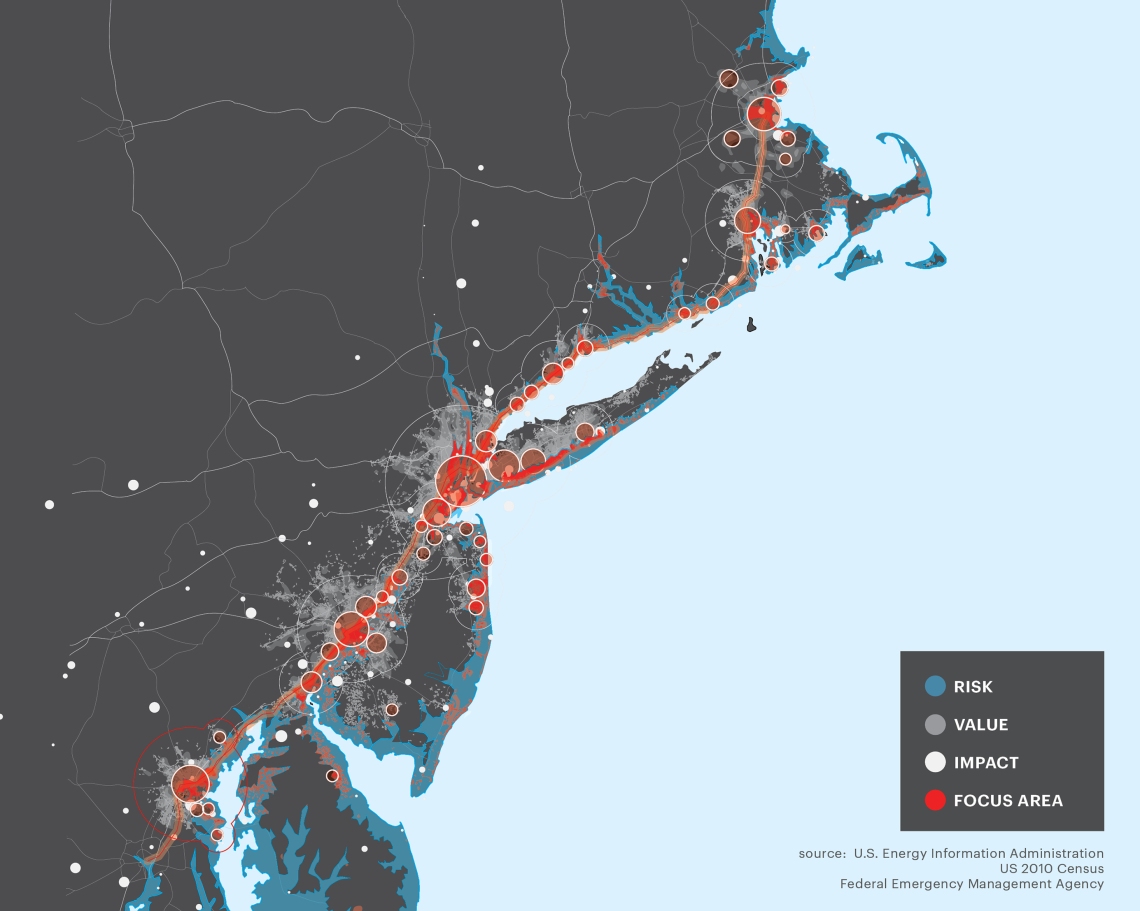
Appearing in the March issue of The Avery Review (print edition here)
It may be that, in the near future, we will come to see how the problems posed by climate change will have opened an entirely new epistemological horizon. Already, such an effect can be registered in the ways many contemporary forms of knowledge have begun approaching the notion of “scale” through radically non-modern ontologies. Emerging across many disciplines are sets of objects, processes, and phenomena visible only insofar as they traverse traditional scalar and temporal categories—“hyperobjects,” flat ontologies, and vibrant matter that cannot be made legible unless we abandon our inherited epistemological frameworks and invent new ones.[1] It is a tendency that has altered discourses from geography to philosophy, political theory, and sociology.[2] Architecture, too, has begun to respond to these epistemological cues embedded in problems brought about by climate change (urban ecologies, the “Anthropocene,” resource geographies, etc.), all of which call for developing knowledge outside traditional scalar categories precisely because the problems climate change makes visible adhere to none and can be observed across all. The urban, too, is another such category increasingly seen to surpass all traditional scales and spatial confines. From “metropolitan” to “megalopolitan” to “regional” to “planetary” in scale, urbanization now reveals itself traversing deserts, arctic regions, and can even be found in the atmosphere.[3] Indeed, it is possible that we can no longer comprehend the urban as a spatiality isolated to any one particular scale at all but must instead illuminate it in its full, trans-scalar ontology. The urban, it would seem, has no scale.
We architects and urbanists tend to respond to this epistemological shift without fully conceiving the corresponding conceptual tools with which to assess the urban. As a result, we acknowledge the trans/non-scalar nature of the urban by fixating on the very same cues that urbanists have always looked at: the continual expansion of the urban into ever-greater scalar referents. In other words, we see whatever gets bigger. On the one hand, such an expansive perception is confirmed in the increasing scales at which urban design operates. Projects like Grand Paris transfer architectural knowledge from what may have been “urban” in scale to what is now ostensibly “regional.”[4] On the other hand, architectural knowledge in general has seen more interest in notions of territory, logistics, resource extraction, migration, and even “planning the planet.”[5] And if Neil Smith’s work in urban geography exposed the process of capitalist urbanization as progressively “jumping scales,” it is perhaps this legacy that Neil Brenner and Christian Schmidt have more recently built upon in their work on “planetary urbanization.”[6] The work produced in Brenner’s Urban Theory Lab in Harvard’s GSD is a brilliant and seductive examination of precisely how far such scalar jumps have gone, bringing the urban into hitherto unknown spaces and realms, whose visibility coincides with that of the planet.
Yet if such a tendency has crystalized a certain image of the urban around the spectacle of the “planetary,” we inevitably overlook the effects simultaneously produced at other scales by the very same processes. If the urban is continually expanding in scale, what effects, spaces, and technologies are produced at more immediate scales and sites?
[1] Hyperobjects, following a Latourian ontology, offers a new philosophical-ecological framework for thinking phenomena across scale—questions posed by the arrival of Big Data, the Anthropocene and Quantum Mechanics all demand a trans-scalar, trans-temporal ontology to comprehend the (hyper)objects they illuminate: “things that are massively distributed in time and space” (p. 1). See Timothy Morton, Hyperobjects: Philosophy and Ecology After the End of the World (Minneapolis: University of Minnesota Press, 2013). While “flat ontology” can be attributed to Manuel DeLanda (Manuel DeLanda, Intensive Science and Virtual Philosophy, London: Continuum, 2002), this notion has been more recently reinterpreted by several from the Object-Oriented Ontology/Speculative Realism camp (Levi Bryant, Graham Harman, etc.) to advocate for a nonhierarchical ontology consisting of objects whose ontological consistency extends across spatio-temporal scales. In a more muted way, Jane Bennett’s concept of “vibrant materialism” assembles a similar span of issues to build a political ecology that resides as much in human agency as it does in that of nonhuman and more-than-human materialisms. Again, such a political ecology points to a new ontology of “things”: objects, phenomena, and events that resist classical compartmentalization in scale and time. See Jane Bennett, Vibrant Matter: A Political Ecology of Things (Durham: Duke University Press, 2010).
[2] See, for example, Neil Brenner, “The Limits to Scale? Methodological Reflections on Scalar Structuration,” Progress in Human Geography, vol. 25, no. 4 (2001): 591–614; or Bruno Latour’s short extract from the Geochemistry of the Earth’s Surface meeting, published as Bruno Latour, “Some advantages of the notion of ‘Critical Zone’ for Geopolitics,” Procedia: Earth and Planetary Science 10 (2014), 3–6. Latour’s work has, of course, had a great influence on the recent development of Object-Oriented Ontology, discussions around the Anthropocene, and Radical Ecology, to name but a few effects of this sort that have emerged in the last years.
[3] See Neil Brenner, Implosions/Explosions: Towards a Study of Planetary Urbanization (Berlin: Jovis, 2014).
[4] See Theresa Enright, “Illuminating the Path to Grand Pari(s): Architecture and Urban Transformations in an Era of Neoliberalization,” Antipode, vol. 46, no. 2, (2014).
[5] “Plan the Planet: Jaqueline Tyrwhitt and the Formation of International and Global Architecture” (March 20, 2015), a Symposium conducted at The Architectural Association, London.
[6] Neil Smith, “Homeless/Global: Scaling Places,” in Mapping the Futures: Local Cultures, Global Change, Bird, J., Curtis, B., Putnam, T., Robertson, G., and Tickner, T., editors (New York: Routledge, 1993): 87–119.
1 Comment